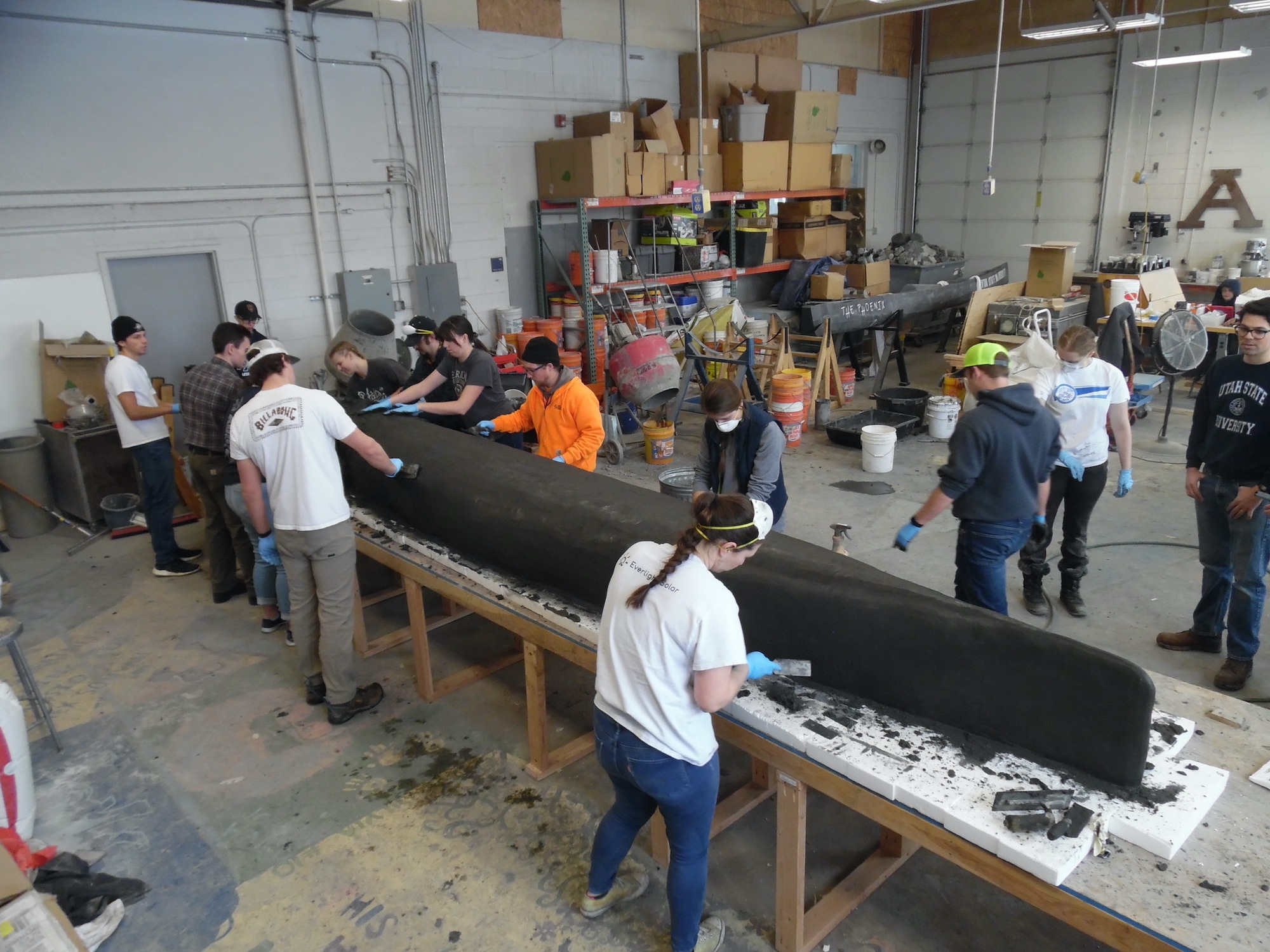College of Engineering sails forward in a concrete canoe
Utah State University’s College of Engineering has been working to draft, mold, cast, create and sail a canoe made of concrete for The American Society of Civil Engineers’ annual competition.
Brett Safely is a junior majoring in civil engineering.
“This is probably the biggest event of the year for us, outside of our actual conference,” Safely said. “It’s a good experience for any student. We’re particularly proud of the fact that we’re able to bring students from all across the program, so freshman to senior, and they’ve made valuable contributions.”
The students began working on the project back in August, and in April, they will take their canoe to Reno, Nevada, to compete.
In September, engineering students are given a packet of rules of around 70 pages, which outlines the proposal format, canoe dimensions and more.
“In the concrete mix, we were given some pretty strict details on what’s included,” Safely said. “All concrete is made of two and a half main parts, a binder and an aggregate.”
According to Safely, Portland cement will be their basis material this year.
“Of all your binders, only 30% can be normal cement,” Safely said. “So we looked at what we had on hand here at the university, or locally available, and settled on using a balance of silica fume and fly ash, which is a byproduct from coal power plants.”
Safely said this is a good option because it complies with the competition requirements, and it is significantly lighter than regular Portland cement.
Rocks and gravel are usually used as aggregate. Since these materials are heavier, the students ended up going a different route.
“It’s just recycled expanded glass,” Safely said. “That’s much, much lighter than any standard rock that we use, and that comes in various sizes for us to put into the mix.”
According to Safely, the boat cannot be taken out on the water in Logan due to environmental regulations, but the team can still practice paddling and racing before heading to Nevada.
“The next major step is getting ready for the casting date, which is when we actually place the concrete formwork after we’ve done all the design,” Safely said. “This year we spent about three hours casting, which is really good. We’ve seen it range all the way from three hours to almost 17 hours depending on how intricate your actual mix placement is.”
The students will compete before judges against other universities from Utah, Idaho, Arizona and Nevada.
“USU tries to participate every year since 1988. I think only two years have not had competitions, and those were 2020 and 2021,” Safely said. “We look forward to actually being out there again and having a greater competitive edge.”
Austin Ball, ASCE faculty adviser at USU, advises the approximately 60 members of the chapter. He said participating in competitions is a good opportunity for students for various reasons.
“The first and most important is that it’s hands-on,” Ball said. “We take the materials that we talk so much about in classes, and we do something with it. And there’s a lot of learning that comes from that — both from the frustration side, but also from watching it come to fruition side. Recognizing the differences between the theoretical and the practical.”
Ball said the team develops soft skills like communication, working as a team and taking a project from a concept to construction.
“You get a group that, you know, become friends and the camaraderie that results from that,” Ball said.
He said he does not consider soft skills “side benefits” because of how important they are.
“And then, of course, there’s the credibility to the college,” Ball said. “We show that USU has the technical prowess to compete at this level. So there really is a whole host of benefits from being a part of this competition.”
According to Ball, the goal is to send three teams from USU to the national competition this year.
“I think the travel is probably their favorite part,” Ball said. “I do think that competing and showing off their work is definitely, you know, a moment of pride for them.”
Ball said 39 students are traveling to Reno to compete this year.
“I’m just genuinely looking forward to their experience this year,” Ball said. “I think that they’re going to do incredibly well, and I couldn’t be prouder of my Aggies.”

